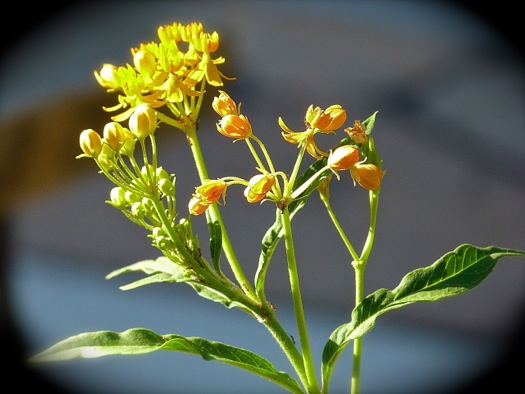October's End: the Good and Bad
 Saturday, October 29, 2016 at 6:15PM
Saturday, October 29, 2016 at 6:15PM I will begin with the bad: 
This is a recent news photo of Lake Purdy, from which Birmingham, Alabama gets its water. Residents of Birmingham and its suburbs are under strict, mandatory water restrictions because of the drought that has extended for over two months, with no end in sight. I live about twenty miles south of Birmingham, and we get our water from other sources, mainly from underground aquifers. We have not yet been hit with mandatory restrictions; but with some doomsayers predicting the drought to continue through the end of the year, I can feel the restrictions coming. Helena has not had a drop of rain in October, and we only had a few drops in September. The drought has been especially bad because of daytime temperatures continuing well into the 80's every day.
Meanwhile, we try to keep important shrubs watered, but with 3.5 acres, it is impossible and prohibitively expensive to water everything. Many leaves look like this: Fothergilla normally has beautiful fall foliage. Not this year!
Fothergilla normally has beautiful fall foliage. Not this year!
But here is the good! Despite the drought, there is still beauty out there, especially if one looks through the golden light of late afternoon. So here is a tour. This is likely to be as good as it gets until rain returns.
I will begin with fall flowers: This area by the front walk is brightened by various salvias, lantana and gomphrena. I planted the red snapdragons on the right a year ago. They survived last winter and continued to bloom all this year.They are still going strong. Amazing!
This area by the front walk is brightened by various salvias, lantana and gomphrena. I planted the red snapdragons on the right a year ago. They survived last winter and continued to bloom all this year.They are still going strong. Amazing! Autumn sage and blue salvia
Autumn sage and blue salvia
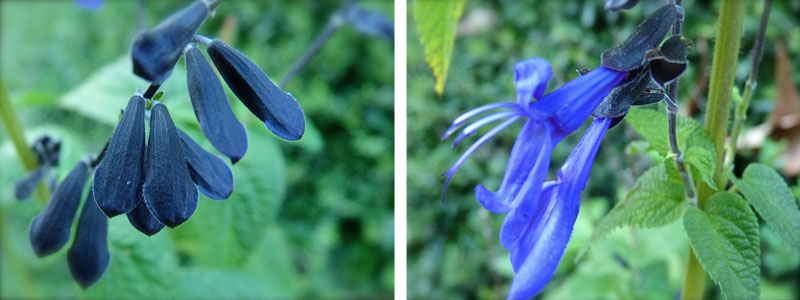 'Black and Bloom' salvia
'Black and Bloom' salvia Clockwise from top left: Marigold; Asters; Mexican Sage; 'Endless Summer' hydrangea.
Clockwise from top left: Marigold; Asters; Mexican Sage; 'Endless Summer' hydrangea.
 This creamy lantana is another low maintenance, front garden bloomer.Most of the Asclepias (butterfly weed) has finished blooming, but I came across these seed pods the other day:
This creamy lantana is another low maintenance, front garden bloomer.Most of the Asclepias (butterfly weed) has finished blooming, but I came across these seed pods the other day:
Firebush is still blooming, but I am beginning to see seed pods on that plant, too: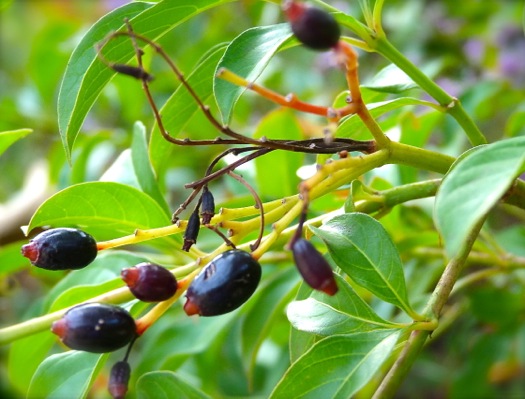
One day I brightened my patio with some leftover cut zinnias from the grocery store; I stuck them in a vase with a spray of Mexican sage.: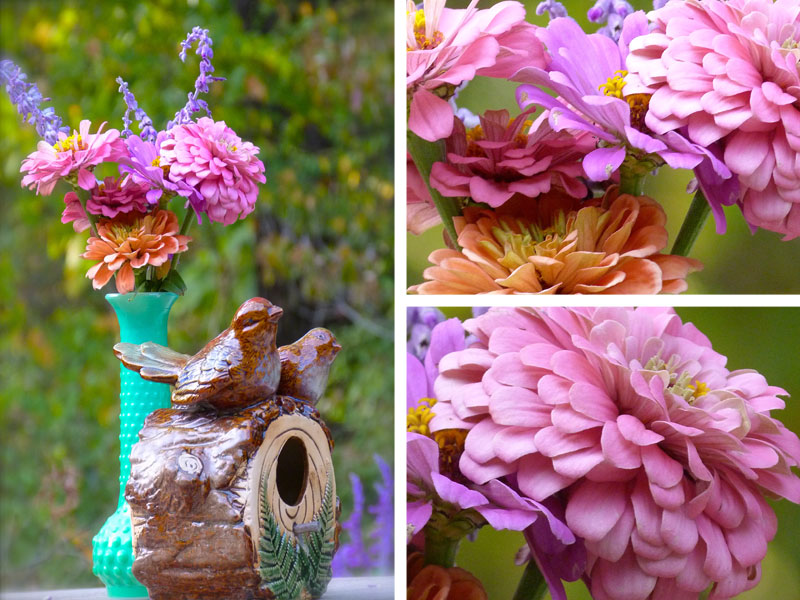
Here are random views from around the garden:


 Forsythia (Yellow bells) is a common shrub with lovely fall colors, even during drought. This plant never gets supplemental water.
Forsythia (Yellow bells) is a common shrub with lovely fall colors, even during drought. This plant never gets supplemental water.

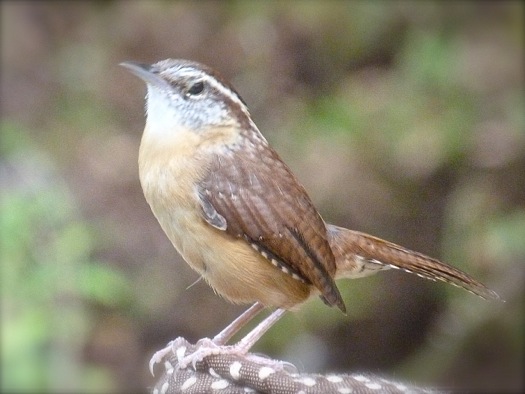 This wren hangs around our patio.
This wren hangs around our patio.
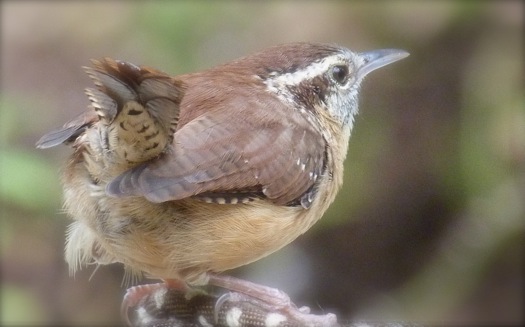



 An ancient muscadine vine grows in the woodland garden.
An ancient muscadine vine grows in the woodland garden. Clockwise from top: Japanese maple; Southern Magnolia; Alabama Croton.
Clockwise from top: Japanese maple; Southern Magnolia; Alabama Croton.
 Do you see the bug on the hickory nut shell?
Do you see the bug on the hickory nut shell?
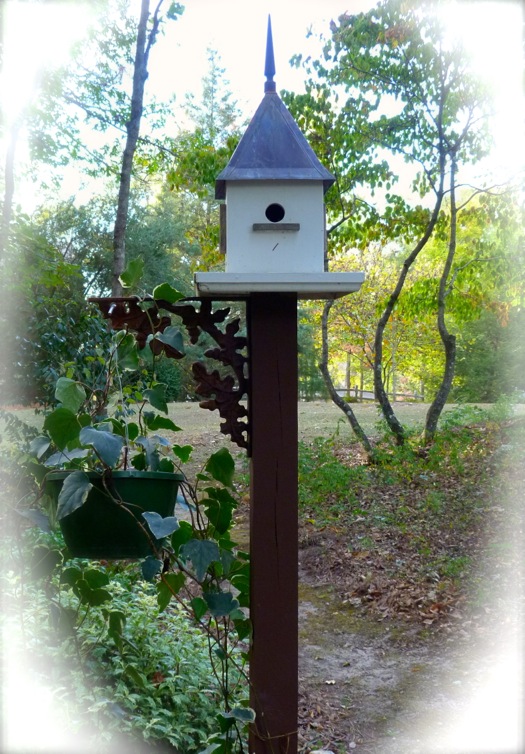
I hope you enjoyed the tour! Blessings to you all, Deb
 Asclepias,
Asclepias,  drought,
drought,  fall,
fall,  fall flowers,
fall flowers,  forsythia,
forsythia,  front garden,
front garden,  llantana,
llantana,  salvias,
salvias,  sseed pods,
sseed pods,  woodland garden,
woodland garden,  wren,
wren,  zinnia in
zinnia in  fall,
fall,  fall garden,
fall garden,  front garden,
front garden,  weather,
weather,  woodland garden
woodland garden 






